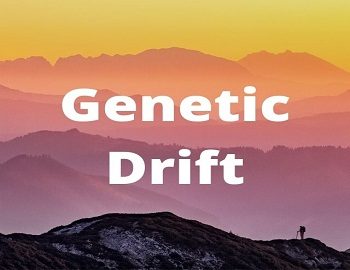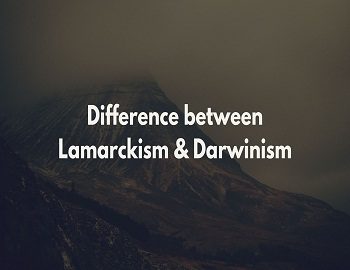Table of Contents
What is Genetic Drift?
The theory of genetic drift was developed by geneticist Sewall Wright in 1930. It is also called the Sewall Wright effect or Scattering of Variability.
Buettner-Janusch prefers to call this phenomenon a sampling error because it is a random statistical effect and not a biological process.
It refers to the ‘random fluctuations‘ in the gene frequencies in a small population generation after generation purely by chance.
Features of Genetic Drift:
- It is an evolutionary force operating in small populations.
- Gene frequency in small populations changes by chance.
- In small populations some genes may be lost or reduced and others may increase by sheer chance irrespective of their selective advantage or disadvantage.
- By genetic drift a new mutation arising in a small population may either be fined or lost irrespective of its adaptive value.
- In a small population, heterozygosity tends to change to homozygosity by chance.
- It may fix some non-adaptive traits in small populations.
- Genetic drift tends to preserve or eliminate genes without distinction.
- Isolated small populations of a large population come to possess some unusual characteristics not shown by their large parental population.
Influence of Genetic Drift on Evolution:
Genetic drift plays a considerable role in the evolution of organisms. In this regard,
- Most breeding populations of organisms are usually small.
- Even a widely ranging broad-based population is isolated into small sub-groups (Demes) either on account of ecological or geographic discontinuities or on account of instinct or territoriality. The size of the sub-populations is such that they appear to be affected by chance events underlying genetic drift.
- Seasonal, annual, or cyclical fluctuations may be observed in population size. If the season or occasion favors a large gathering of population, then genetic drift may not take place. On the other hand, even if such seasonal fluctuations in population size cannot make it a large one, even then genetic drift may operate in that case the gene pool of that generation may not be the representative of the parental gene pool. All this is due to chance changes or genetic drift. The altered gene pools in due course of time may lead to new species.
Founder Effect and Genetic Bottleneck:
Drift is a binomial sampling error that often leads to the elimination of certain alleles and fixation of others. Genetic drift causes large changes in the allele frequencies in a population derived from small bands of colonizers, called founders, to a new habitat. The phenotype of such population quickly become different from the parental population. Such an effect is called the founder effect.
Sometimes, a drastic reduction in population size occurs due to the crashing of the population. This causes a change in allele frequencies and ultimately, the gene pool becomes limited. In this condition, the population cannot re-establish its former richness. Such reduction in allele frequencies in a population that prevents the species from reversing its path of extinction is called a genetic bottleneck.





![Water Cycle In Nature [Hydrological Cycle] 6 water cycle in environment](https://gkscientist.com/wp-content/uploads/2020/09/water-cycle-in-environment.jpg)



Comments (No)